Paulina & Sercan
Things To Do / Lugares que Visitar
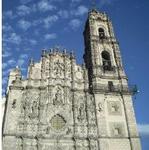
Museo Nacional del Virreinato
The National Museum of the Viceroyalty is dedicated to researching, preserving, and spreading awareness of the culture of the viceregal period (from the middle of the sixteenth century to the beginning of the nineteenth, when Spanish domination came to an end. Mexican architecture in its main lines followed that of Spain at a time when the Renaissance style was developing in the mother country), one of the most significant in Mexico’s history. The museum opened its doors to the public in 1964 and since then it has sought to bring the visitors closer to life in New Spain. Tuesday to Sunday from 9:00 a.m. to 3:45 p.m.
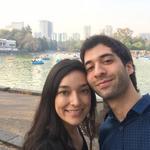
Bosque de Chapultepec
Over 20 million years ago, Chapultepec (Grasshopper) Hill was formed. The Chapultepec Forest (park) is an urban forest that has 8 museums, more than 100 monuments and fountains, boats to row in the lakes, and many areas where you can take a walk and enjoy nature.
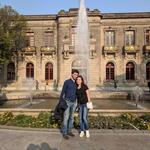
Chapultepec Castle
Castillo de Chapultepec, a historic hilltop castle once used for royalty and now serving as the National Museum of History, offers stunning views, a rich history, and impressive architectural feats. The castle stands 7,628 feet above sea level, so you'll be able to see out for miles when you reach the highest viewpoint. Tuesdays to Sundays, 9 am. to 5 pm.
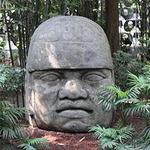
Museo Nacional de Antropologia
Mexico’s National Museum of Anthropology attracts over 2 million people each year and is the most visited museum in the country. Established in 1964 in Mexico City’s Chapultepec Park, this archaeology museum holds some of the most important pieces in the country’s rich and diverse history. The most famous is undoubtedly the original Aztec Sunstone, also known as the calendar stone or the Stone of the Five Eras. Visitors can also view the giant Olmec stone heads Tuesdays through Sundays, 9 a.m. to 5 p.m.

Angel of Independence
If you ask Mexico City residents which symbol best represents the city, nine out of ten will name El Ángel. More officially known as the Monumento a la Independencia, the Independence Monument has guarded its own glorieta on Paseo de la Reforma since the centennial celebrations of Mexican Independence in 1910.
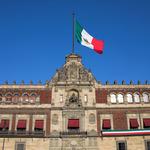
Zocalo
It is the main square and heart of Mexico, with its origin in the main square of the great Tenochtitlan. In the middle of the 19th century a column in the center of the square was planned to commemorate the Independence of Mexico but only the base ever came to be. People began to call it “El Zócalo” meaning, the base. This is one of the best locations to people-watch and get a feel of how Mexico City has merged civilizations over the centuries.
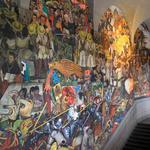
National Palace
Located in Mexico City’s main square, the Plaza de la Constitución (Zócalo), the National Palace (or Palacio Nacional) is best known for the magnificent murals painted by the famous Mexican artist, Diego Rivera. Tuesdays through Sundays, 9 a.m. to 5 p.m. register previously at Museo de la Secretaría de Hacienda y Crédito Público
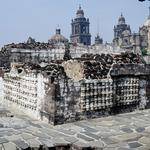
Templo Mayor Museum
This archaeological site was the most important temple of Mexico Tenochtitlan. It was at the center of the political and religious life of the Mexica society. The temple itself consisted of four pyramids and ended in two shrines dedicated to, respectively, the gods of water (Tlaloc) and war (Huitzilopochtli). The House of the Eagles, the Temple of the god Ehécatl, a ceremonial tree at the foot of the stairway, the Huey Tzompanli, the Ball Game court, and the Calmécac were also part of the larger complex. Tuesday to Sunday from 9:00 to 17:00.
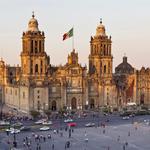
Mexico City Metropolitan Cathedral
The first cathedral to have been built in the Americas. When the city of Tenochtitlan fell to Spanish rule, more than 50 buildings were destroyed in the sacred central quarter. A first Cathedral was underway for the most important church in the vice royal capital. Archaeological excavations uncovered part of the Temple of the Sun and the stairway of another building beneath the current Cathedral. The remains of the primitive church were excavated within the current atrium, and today these can be admired through archaeological windows. Open every day from 9a.m. to 5:30 p.m.
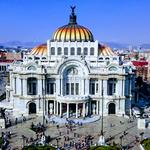
Palacio de Bellas Artes
While structures of note have sat on this spot for centuries, the Museo del Palacio de Bellas Artes wasn't finished until 1932 following about 20 years of construction efforts. The Museo del Palacio de Bellas Artes, or Palace of Fine Arts, is a popular cultural center set up within a massive neoclassical and art nouveau structure. Also known as the Cathedral of Art in Mexico, this palace hosts 2 museums in addition to numerous events and exhibitions held throughout the year. They all tend to focus on Mexican culture and art, though you'll also find some international exhibits held here on occasion. Tip: Café de la Gran Ciudad is a coffee spot on the 9th floor of the Sears building across the Palace of Fine Art providing a lovely view of the building. Tuesdays through Sundays, 10 a.m. to 5:30 p.m.
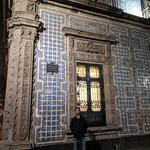
The House of Tiles
The complex decoration of La Casa de los Azulejos, or the House of Tiles, is a lasting record of Mexican art and history. The building’s facade is covered in blue, white, and yellow tile; its interior features a mural by famed Mexican painter José Clemente Orozco; and its glass-ceilinged atrium contains stone pillars, murals, and a fountain. These lushly decorated walls have witnessed a microcosm of Mexican history, housing noblemen and workers’ organizations before evolving into the most beautiful branch of a chain restaurant. Open every day 7 a.m. to 1 a.m.
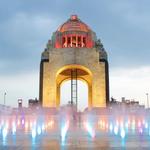
Monumento a la Revolucion Mexicana
Among the most iconic symbols of Mexico City, the Monument to the Mexican Revolution is a unique mix of Art Deco and Mexican Socialist Realism super-imposed over an existing and obviously Neo-classical cupola structure. The sculptor Oliverio Martínez designed four stone sculpture groups for the corners of the monument, including those allegorically representing Independence, the Reform Laws, Agrarian Law, and Labor Law. The monument and the subterranean museum serve as a mausoleum for the fallen heroes of the Revolution.
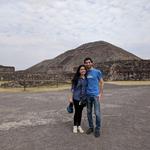
Teotihuacan Pyramids
Pre-Hispanic City of Teotihuacan The holy city of Teotihuacan ('the place where the gods were created') is situated some 31 miles north-east of Mexico City. Built between the 1st and 7th centuries A.D., it is characterized by the vast size of its monuments – in particular, the Temple of Quetzalcoatl and the Pyramids of the Sun and the Moon, laid out on geometric and symbolic principles. As one of the most powerful cultural centres in Mesoamerica, Teotihuacan extended its cultural and artistic influence throughout the region, and even beyond.
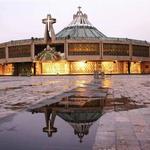
Basilica of Our Lady of Guadalupe
The Basílica de Guadalupe, the Basilica of Our Lady of Guadalupe, holds the honor of being the most-visited Catholic pilgrimage site in the world, attracting millions of pilgrims every single year. The basilica is built near Tepeyac Hill, upon which the Blessed Mother appeared to St. Juan Diego in the year 1531. The Virgin of Guadalupe was declared Queen of Mexico and is Patron of the Americas. For guided tours in English, contact the Basilica in advance at visitasguiadas@inbg.mx or by phone +52 55 55 18 05 00, ext. 472 and 545
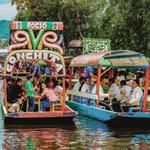
Floating Gardens of Xochimilco
Located at the southern edge of Mexico City, Xochimilco is an area of canals and chinampas (floating gardens), the last vestiges of Tenochititlans, once the Aztec city on a lake which was called the Venice of the New World by conquering Spaniards. The canals and their ecosystem were declared a World Heritage Site in 1987, with particular focus on saving the native ahuejote juniper tree and the rare axolotl amphibian.
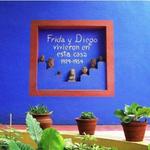
Frida Kahlo Museum
Frida Kahlo's house competes every year with the National Museum of Anthropology for the title of “most visited museum” in Mexico City. The Casa Azul lets visitors discover more of the deep relationship between Kahlo and Rivera, how they lived, and how they perceived the times in which they lived. The purchase of tickets in advance is highly recommended, in part, because the museum is so very well-attended. Tuesday through Sunday 11 a.m. to 6 p.m.
Coyoacan
Meaning ‘place of coyotes’ in Nahuatl, the area was once a pre-Hispanic village on the shores of Lake Texcoco. After the arrival of the Spaniards, it became the first capital of New Spain in 1521 and remained totally independent of Mexico City until it was incorporated into the Federal District in 1857. The area is a popular weekend destination for locals and tourists alike who enjoy the charm of the cobblestone streets, quaint plazas, artisans markets and colonial architecture. The two main plazas of the center bustle with activity, with mimes, musicians and dancers entertaining the crowds and vendors selling all types of delicious foods.